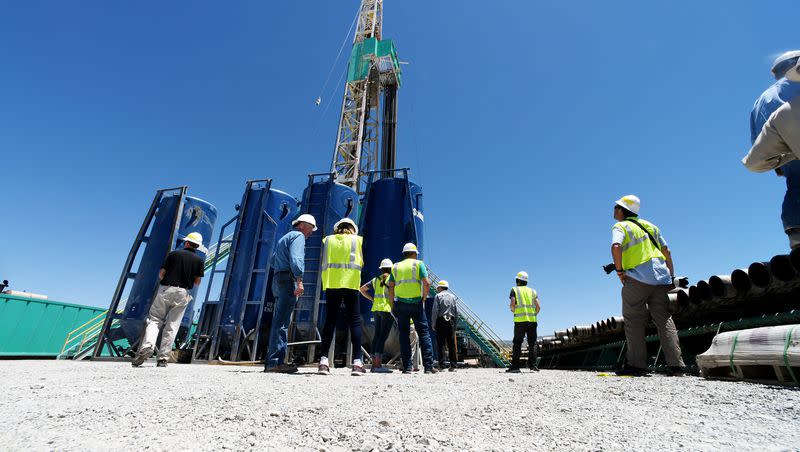Geothermal regulations, permitting need overhaul, Curtis says

A renewable and clean energy resource has the potential to produce up to 8.5% of the nation’s electrical generating capacity by 2050, but the geothermal projects are slow getting off the ground and have to work their way through a complex permitting process.
Rep. John Curtis, R-Utah, is sponsoring legislation to streamline regulations and get more of the energy in the nation’s power portfolio.
“Geothermal is a critical piece of our energy strategy and helps to ensure a future that is affordable, reliable and clean,” said Curtis, who represents Utah’s 3rd District. “This bill ends unnecessary hurdles and supports the development of projects, rewarding innovation to meet our energy needs.”
Curtis points to the country’s own U.S. Department of Energy, which said these enhanced geothermal systems could be a reliable source of clean power — up to 60 gigawatts — by 2050.
Despite this, Curtis said developers face lengthy and costly environmental reviews, along with cumbersome leasing and permitting processes, resulting in timelines that extend far beyond those of other power production projects.
He wants to amend the Geothermal Steam Act of 1970 to address those regulations.
His announcement about the bill introduced earlier this month points to the FORGE project in Utah as an example of the potential geothermal brings to the energy sphere.
Related
Why there’s global significance at a geothermal project in Beaver County
Utah’s FORGE geothermal site proves it’s more than just wishing wells
FORGE reached a milestone in 2023, demonstrating that its two deep vertical wells that link to a long horizontal conduit are indeed connected — much like a radiator in a car that operates on a circulating loop.
The project injected 1,800 barrels of water into one well at five barrels a minute and achieved success when it flowed along the horizontal pathway to travel up the production well.
The field laboratory at the demonstration site in Beaver County features a large volume of hot crystalline granite between two deep directionally drilled wells at around 8000 feet depth below the surface.
In 2016, the University of Utah and Sandia National Laboratory in Nevada were among the two candidates for the research after beating a volcanic area in Bend, Oregon, the Idaho National Laboratory near Idaho Falls, and a Sandia site at the U.S. Navy’s China Lake Naval Air Weapons Station north of Ridgecrest, California.
Ultimately, the research team led by the University of Utah prevailed.
Related
When U.S. Energy Secretary Jennifer Granholm visited Utah last year, she described Utah’s geothermal resources as vast and holding promise for developers to bring it to utility scale.
She said with just 2% of the resource tapped, U.S. geothermal energy is abundant enough to power the United States 2,000 times over.
“That is the holy grail of clean energy,” Granholm said at the time.
Still, Curtis said the Department of the Interior is holding up projects that already have a final stamp of approval due to the department’s concern over litigation. He emphasized that even after a company has spent substantial time and resources getting a project permitted, Interior is still withholding notices to proceed, drilling permits, and other authorizations because of litigation threats against a project.
The bill would force the Interior department to continue issuing authorizations unless a federal court vacates the underlying lease.

